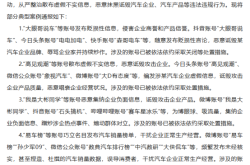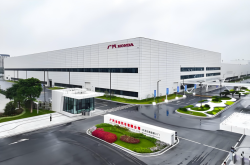Will Electric Cars Lose Intelligence Without Nvidia? | Pix Video
![]() 12/31 2024
12/31 2024
![]() 540
540
Author | Zhang Jixin
Editor | Mao Shiyang
Original by Autopix (ID: autopix)
If Nvidia were to fade from the scene, would it hamper the advancement of smart cars in China?
Recently, Nvidia has faced increasing scrutiny. First, it was investigated for antitrust violations, and subsequently, four industry associations urged caution in selecting American chips. Among them, the China Association of Automobile Manufacturers stated, "To ensure the security and stability of the automotive industry chain and supply chain, the association recommends that Chinese auto companies exercise caution when procuring American chips."
In the automotive sector specifically, if Nvidia were not chosen, the immediate impact on the domestic automotive industry would be significant, but in the long term, the repercussions might not be as severe as anticipated.
In the realm of autonomous driving chips, Nvidia still dominates the market, with annual shipments exceeding one million units in China. Particularly in the mid-to-high-end new energy vehicle market, over 100,000 vehicles are equipped with Nvidia's autonomous driving chips each month. Many leading domestic autonomous driving solutions are developed in tandem with Nvidia's chips, and these foundations are unlikely to change in the near future.
Why is Nvidia so formidable? Today's smart cars demand increasingly high onboard computing power, and one of Nvidia's strengths lies in its stable and efficient computing power output. For instance, the popular OrinX boasts a single-chip computing power of up to 254 TOPS. Among its peers, we're referring to chips of the same level that have been mass-produced. If a chip's computing power can reach half of OrinX's, it is considered exceptional.
However, anyone who follows the electric vehicle industry knows that AI large models are now being deployed on vehicles, further escalating the demand for computing power in smart cars.
How high? Some domestic chip manufacturers have made predictions. For Level 4 fully autonomous driving, over 1000 TOPS of computing power may be required, not to mention the computing power that might be utilized in intelligent cockpits and intelligent vehicle control, along with necessary redundancies.
Even for Nvidia, grappling with the future computing power gap in automobiles presents a challenge.
Consequently, many domestic car companies have accelerated their efforts to develop in-house chips to replace Nvidia, such as XPeng, Li Auto, and NIO. What are the advantages of in-house chip development? Firstly, with both software and hardware being developed in-house, the efficiency of software in mobilizing hardware is enhanced. For example, XPeng utilizes its self-developed Turing chip, which can fully mobilize 100% of its computing power, whereas with Nvidia, it can only mobilize 30%.
Another benefit of in-house development is that the chips are easier to coordinate with each other. For instance, some car companies plan to stack multiple small computing power chips to achieve high computing power. The challenge with this solution lies in software. Multiple chips performing the same task is akin to using multiple brains to think about the same thing, which can easily lead to issues like low operating efficiency and high latency.
This necessitates the development of a central computing software platform to smoothly schedule the computing power of multiple chips. In-house developed chips can better integrate with this scheduling system.
Faced with such a significant computing power gap in future smart cars, Nvidia has already initiated its deployment. In 2022, Nvidia released Thor, an intelligent driving chip designed for the future, aiming to achieve a computing power of 2000 TOPS.
However, two years after Thor's announcement, it has yet to enter mass production and has experienced several delays. Its computing power has also been reduced from the initial 2000 TOPS to 1000 TOPS, causing delays for many domestic high-end models or temporary supplier changes.
Why is it so difficult? There are two primary methods to increase the computing power of a single chip: one is to increase the chip's area, which raises cost concerns. Doubling the chip's area can increase the cost by 3 to 5 times, which is unacceptable to car companies.
The other method involves improving the manufacturing process and finding ways to incorporate more transistors into a unit area. For example, Nvidia's OrinX employs a 7nm process, while Thor has been upgraded to 4nm. This tests both manufacturing capabilities and chip design. Nvidia's Thor encountered yield reductions due to design issues, ultimately delaying progress.
In China, advanced chip manufacturing processes have always been a technological bottleneck. Therefore, when designing chips, car companies refrain from considering advanced processes below 7nm for the time being. They cannot be manufactured or designed in a short period.
If Nvidia's automotive chips were indeed to lose prominence for some reason, in the long run, it might open up more verification opportunities for domestic car companies' high-computing power solutions.
This article is an original content by Autopix
Do not reprint without authorization






